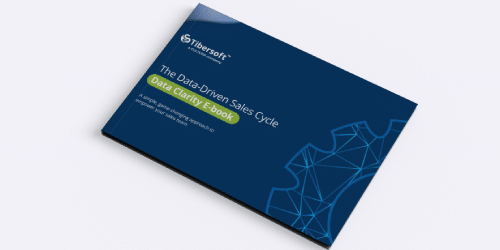Our recent best practices sharing session brought together a group of forward-thinking professionals from top-tier foodservice manufacturers who shared their experiences putting sales insights into action – from identifying gaps and opportunities to segmenting markets and tracking performance.
I thought I’d summarize some of the valuable perspectives and stories shared among the group that can inspire other foodservice manufacturers to start leveraging actionable data insights to enhance their sales strategies.
Measuring Business Recovery by Evaluating Performance Against 2019
Kristin Gilmore, West Region Manager at Kellogg Company, shared how our 2019 recovery dashboard greatly improved her ability to investigate business operations, specifically utilizing the data from 2019 as a benchmark to assess business recovery progress.
In this case, they focused on the college & university segment and closely examined their cereal sales. Using the dashboard, they were able to pinpoint the specific universities where they had experienced a decline and strategically allocate their team’s efforts towards recapturing that business.
“I regularly rely on Tibersoft for visibility and actionable insights. It has truly helped me become a better detective of my business as a regional manager. It has been a valuable tool for me, and I highly appreciate its capabilities,” explains Gilmore.
Her colleague, Kevin Schessler, Zone Manager at Kellogg Company, further elaborated on the value of the 2019 recovery dashboard.
“One of the things that I really like about the 2019 recovery dashboard is that it’s reached a point where my team can utilize it themselves. They have the ability to filter data based on their territory and preferred categories, which allows them to identify operators in their territory who were purchasing certain products, like crackers in 2019, but have since stopped. This helps us pinpoint white space opportunities. Similar to Kristen, it has been a great experience for me and my team to use this tool in identifying areas where we still have gaps to recapture our pre-pandemic market share,” says Schessler.
Uncovering Voids, Targeting Opportunities, and Data-Driven Sales Initiatives
Brooks Friedman, Director of Sales, Non-Commercial Foodservice at Smithfield, shared how his team utilizes our whitespace dashboard to uncover potential opportunities where customers may be buying only one product, like sausage, but have the potential for other purchases.
This analysis is conducted on a trimester basis and allows Brooks’ team to identify 100 to 150 locations across the country for targeted efforts. These warm calls to customers prove to be more effective than cold calls.
“We focus on identifying voids and leveraging sales initiatives based on specific buying groups. For instance, in the breakfast category, we examine our breakfast sausage customers and identify those who are not purchasing bacon. It’s an easy way to pinpoint high-volume sausage users who present great opportunities for us,” explains Friedman.
John Feilmeier, Senior National Account Manager at Kellogg Company, and his team also use the white space dashboard. They look for customers that are buying from Kellogg’s but not purchasing target products or categories.
“Maybe they’re buying cereal and waffles but they’re not buying graham crackers or saltines. It’s great to use the rifle rather than the shotgun approach and say, ‘Here is a list of customers who are buying our items but aren’t buying a certain category.’ That’s our big win and how we use whitespace insights,” shares Feilmeier.
Operator Data Analysis and Business Growth
One sales account executive in foodservice distribution shared that he uses Tibersoft for quarterly business reviews with his distributor partners. He’s able to share insights on operators purchasing from his distributors with his distributor customers that validate his recommendations. Since he started sharing these insights, his distributor customers have started to look to him for insights into their own businesses.
We’re very grateful for the strong community of foodservice manufacturing professionals who shared their experiences. The best practice sharing session emphasized the numerous opportunities for foodservice manufacturers to unlock the potential of data to enhance their sales strategies, achieve growth, and stay ahead in a competitive market landscape. We look forward to future sessions to further explore the possibilities that arise when you turn data into insights.





